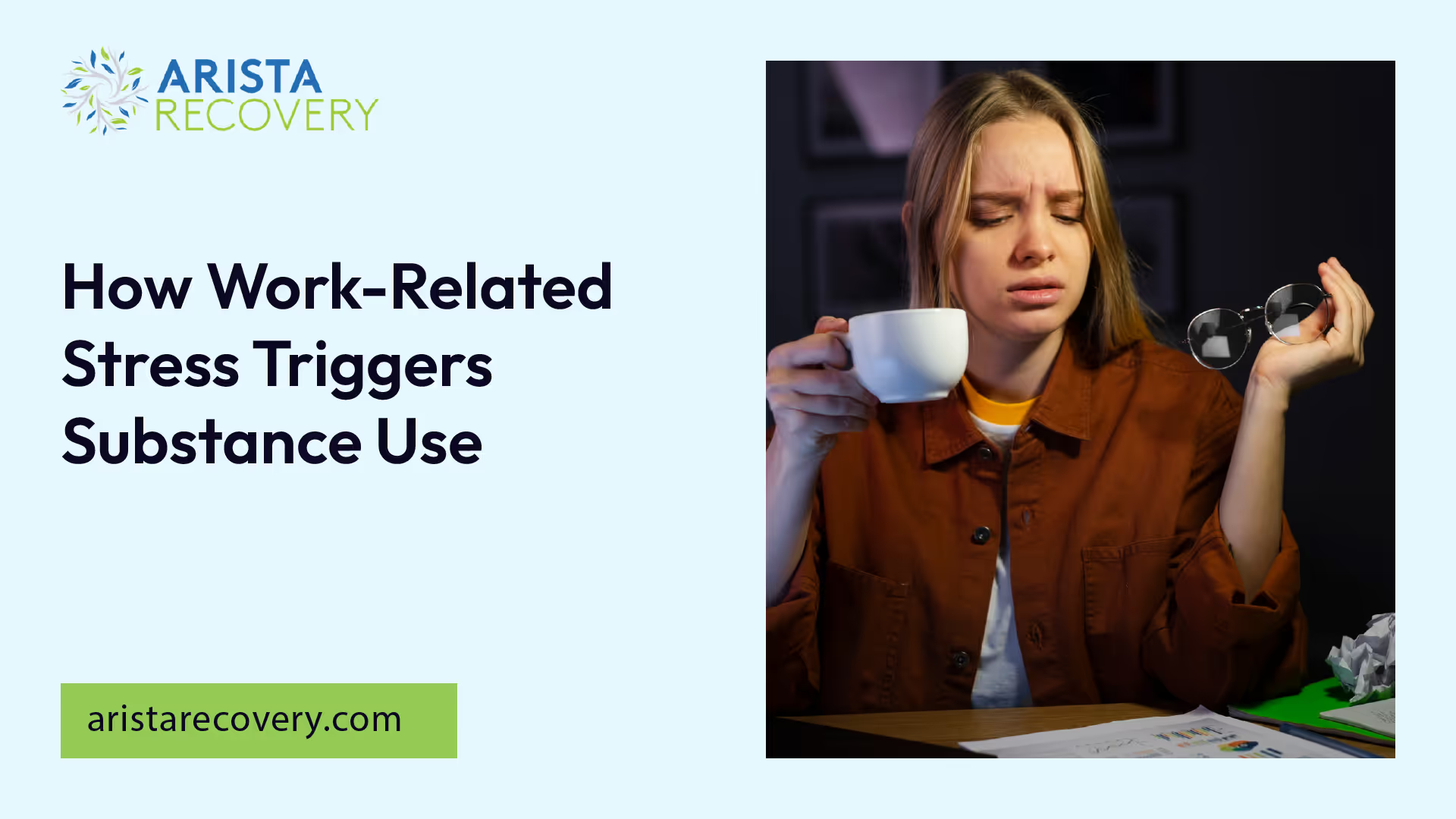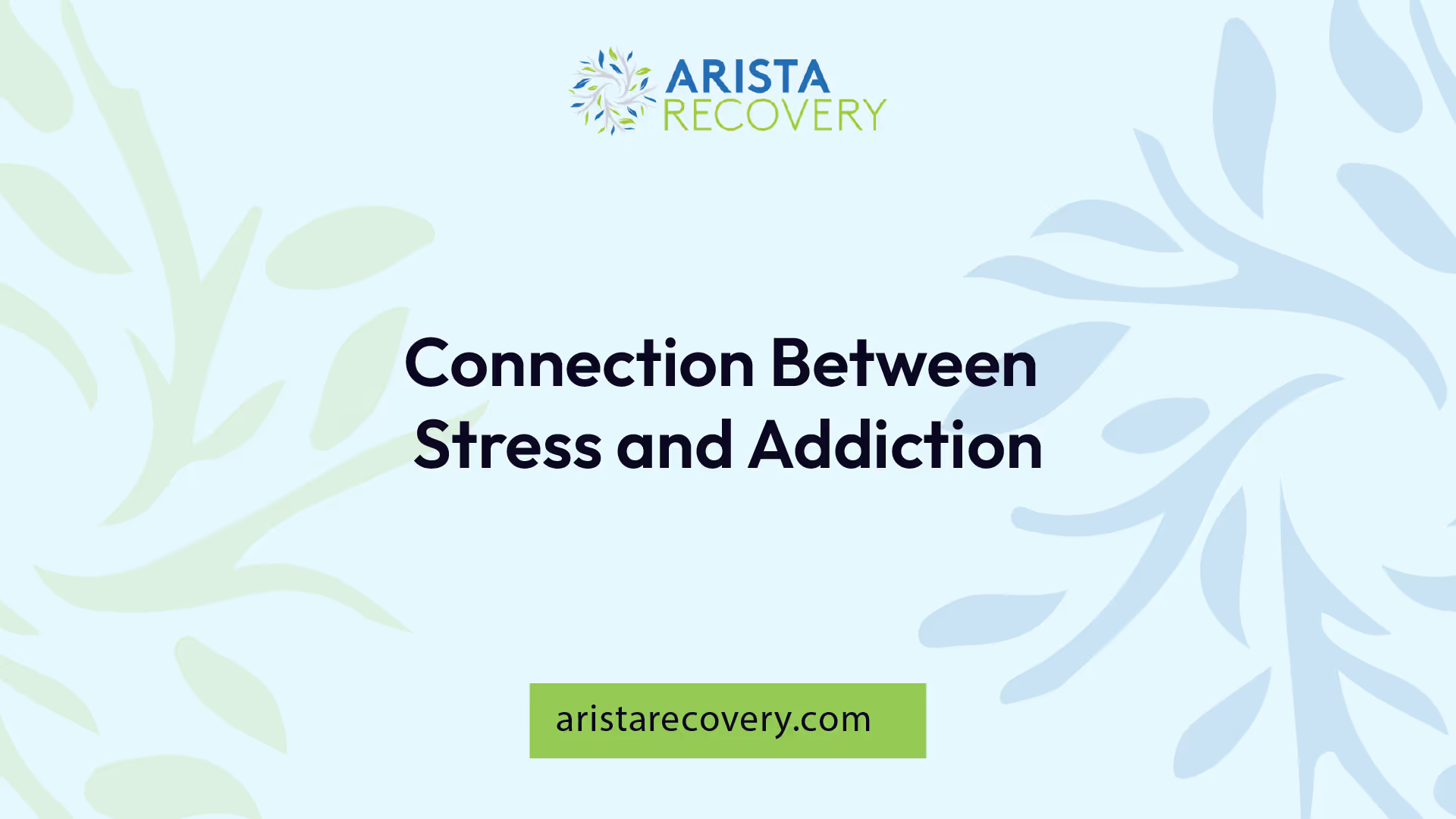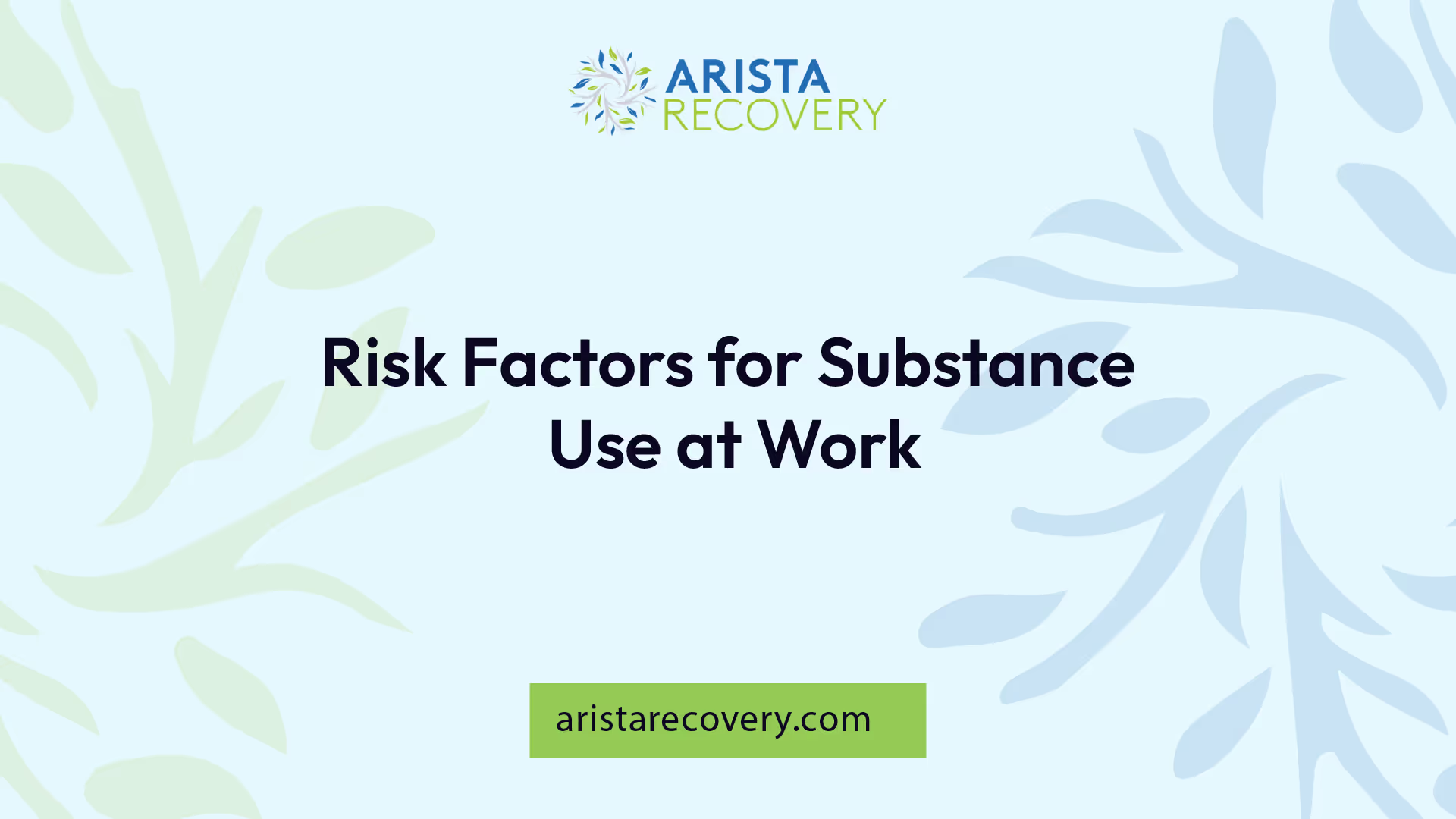How Work-Related Stress Triggers Substance Use

Work Stress and Substance Use Trends
Exploring the dynamics between work stress and substance use reveals a complex relationship that can have significant impacts. Understanding the impact of work stress on substance use and recognizing the prevalence of substance use in the workplace are crucial steps in addressing this issue.

Impact of Work Stress on Substance Use
Work-related stress can trigger a range of physical, psychological, and behavioral symptoms that may contribute to substance use. These symptoms can include headaches, stomach issues, anxiety, irritability, fatigue, difficulty concentrating, changes in appetite, increased use of alcohol or drugs, and social withdrawal [1]. It is essential to note that jobs that are physically demanding, dangerous, or mentally and emotionally stressful can amplify the likelihood of drug or alcohol abuse as a coping mechanism.
The costs of alcohol abuse in the workplace are substantial, amounting to nearly $250 billion per year in the US economy, with 62% directly linked to lost productivity. Understanding how work stress can lead to substance abuse is vital for creating supportive environments that promote employee well-being and productivity.
Prevalence of Substance Use in the Workplace
Substance use in the workplace is a prevalent issue that can have adverse effects on work behaviors and outcomes. Studies have shown that heavy alcohol use, illicit drug use, and substance use disorder are associated with negative work behaviors such as absenteeism and frequent job changes [3].
Industry-specific trends also shed light on the varying rates of substance use. The lowest rates of heavy alcohol use, illicit drug use, and substance use disorder are typically observed in education, health care and social assistance, and public administration industries. In contrast, higher rates are often noted in industries like mining, construction, and accommodations and food services [3].
A comprehensive understanding of the prevalence of substance use across different work environments can aid in the development of tailored prevention and intervention strategies to address these issues effectively. By recognizing the impact of work stress on substance use and acknowledging the prevalence of substance use in the workplace, organizations can take proactive steps to promote a healthier and more supportive work environment for their employees.

Connection Between Stress and Addiction
Understanding the association between work stress and substance misuse is crucial in addressing the impact of work-related stress on addiction. Research indicates a significant connection between perceived job stress and substance misuse. Industries such as firefighters, truck drivers, construction workers, and journalists have shown a correlation between high work stress and addiction [2].
Association Between Work Stress and Substance Misuse
Chronic stress is a well-known risk factor in the development of addiction and vulnerability to relapse. Studies have identified specific stressors predictive of substance use and abuse. The interplay between stress, addiction, and brain function involves complex neurobiological mechanisms that impact stress-related brain circuits and neurotransmitter systems. Understanding these mechanisms is crucial in developing effective prevention and intervention strategies to manage work-related stress and reduce the risk of substance abuse.
Industries with High Substance Use Rates
In the workplace, certain industries have been found to have higher rates of substance use due to the nature of the job demands and associated stress levels. Employees in high-stress professions are more susceptible to turning to substances as a coping mechanism. Firefighters, truck drivers, construction workers, and journalists are among the occupations that have shown increased rates of substance use, highlighting the impact of work-related stress on addiction [2].
The workplace environment also plays a pivotal role in an individual's vulnerability to substance abuse. Peer influence and the overall culture of a workplace can contribute to the normalization of substance use as a coping mechanism for work-related stress. Creating a supportive and healthy work environment that promotes well-being and provides resources for stress management can help mitigate the risks associated with work-related substance abuse.
By recognizing the connection between stress and addiction, implementing preventive measures, and fostering a workplace culture that prioritizes mental health and well-being, organizations can effectively address the underlying factors that contribute to substance misuse among their employees.

Risk Factors for Substance Use at Work
Understanding the risk factors associated with substance use in the workplace is crucial for addressing and mitigating this issue. Two significant risk factors are mental health and substance use patterns, as well as job stress and vulnerability to addiction.
Mental Health and Substance Use Patterns
High stress levels and mental illnesses significantly impact substance use patterns, highlighting a distinctive difference in substance use trends between individuals with any mental illness (AMI) or serious mental illness (SMI) and those without any mental illness. NCBI reveals that there is a substantial positive correlation (*p < 0.05) between substance use disorder (SUD) deaths and suicide, indicating a complex relationship between mental health, substance use, and mortality rates.
It is concerning that less than half of individuals with co-occurring substance use disorders and mental illness received any mental health services in 2018, showcasing a significant gap in care for individuals dealing with both substance use and mental health challenges. This gap in services emphasizes the need for comprehensive and integrated treatment approaches for individuals facing co-occurring mental health and substance use issues.
Job Stress and Vulnerability to Addiction
Work-related stress is a well-known risk factor in the development of addiction and vulnerability to addiction relapse. NCBI highlights that chronic stress is associated with increased susceptibility to substance use and abuse. Studies have identified specific stressors that can predict substance use behaviors, indicating a complex interplay between work-related stress and substance misuse.
Evidence suggests a positive association between psychosocial adversity, negative affect, chronic distress, and increased vulnerability to substance use. Individuals facing high levels of negative life events, trauma, stress, and chronic distress are at a heightened risk of engaging in substance abuse behaviors. This underscores the importance of addressing workplace stressors and implementing effective strategies to support employee well-being and mental health.
By recognizing and addressing the interconnected nature of mental health, job stress, and substance use patterns, workplaces can create a supportive environment that promotes employee health and well-being. Proactive measures such as providing access to mental health resources, implementing stress-reduction initiatives, and fostering a culture of open communication and support can help mitigate the risk factors associated with substance use in the workplace.
Workplace Environment and Substance Abuse
Within the realm of addiction, the workplace environment can exert a significant influence on an individual's vulnerability to substance abuse. This section explores how peer influence and workplace culture can contribute to substance misuse among employees.
Peer Influence and Substance Use
One of the key factors that contribute to substance use within the workplace is peer influence. Colleagues who engage in substance use behaviors can inadvertently create an environment where the normalization of such activities occurs. The influence of peers can play a pivotal role in an individual's decision to partake in substance use as a coping mechanism for work-related stress. The desire to fit in or alleviate stress in a social setting can lead to an increased likelihood of substance misuse among employees.
To combat the impact of peer influence, organizations can implement educational programs and policies that promote a healthy and supportive work environment. By fostering a culture that discourages substance use and encourages positive coping mechanisms, employers can help mitigate the risks associated with peer influence on substance abuse.
The Role of Workplace Culture in Substance Misuse
The overall workplace culture plays a crucial role in shaping employees' attitudes and behaviors towards substance use. A workplace culture that promotes long working hours, high levels of competition, and inadequate support for mental health issues can contribute to an environment where employees may turn to substances as a means of coping with stress and pressure.
Organizations that prioritize employee well-being, mental health support, and work-life balance are more likely to create a positive and healthy work culture that minimizes the risk of substance misuse. By fostering open communication, providing access to mental health resources, and promoting a healthy work-life balance, employers can create a workplace culture that supports employees in managing work-related stress without resorting to substance use.
Understanding the influence of peer dynamics and workplace culture on substance abuse is essential for organizations looking to create a supportive and healthy work environment. By addressing these factors and implementing preventive measures, employers can help mitigate the risks associated with work-related stress and substance use, ultimately fostering a workplace that promotes employee well-being and productivity.
Consequences of Work-related Substance Abuse
The repercussions of work-related substance abuse can have far-reaching effects on both individuals and the workplace environment. Understanding these consequences is essential in recognizing the impact of work-related stress on substance use.
Effects on Productivity and Performance
Substance abuse in the workplace significantly impairs productivity and performance, leading to decreased efficiency and substandard work quality. The costs of alcohol abuse in the workplace alone amount to nearly $250 billion annually in the US, with 62% directly linked to lost productivity [2]. Employee heavy alcohol use, illicit drug use, and substance use disorder are associated with negative work behaviors such as absenteeism and frequent job changes.
Chronic stress, a common trigger for substance abuse, is a well-documented risk factor in the development of addiction and relapse vulnerability [4]. The cycle of regular and chronic drug use can sensitize individuals, heightening their response to stress and drugs. This can lead to alterations in stress and dopamine pathways, impacting craving, compulsive seeking, and relapse risk [4].
Healthcare Costs and Absenteeism Rates
Work-related substance abuse not only affects productivity but also escalates healthcare costs and absenteeism rates in the workplace. Substance abuse can result in increased health complications, leading to higher medical expenses for both the individual and the employer. Moreover, absenteeism rates tend to rise as individuals grappling with substance abuse issues may frequently call in sick or exhibit erratic attendance patterns.
An estimated 70% of the more than 14.8 million people who use illegal drugs are employed at least part-time, emphasizing the prevalence and impact of substance abuse on the workforce. Industries such as mining, construction, and accommodations and food services exhibit higher rates of substance use disorders, reinforcing the need for targeted interventions and support systems in these sectors.
To mitigate the consequences of work-related substance abuse, organizations must prioritize prevention strategies, early intervention programs, and a supportive workplace culture that encourages open communication and seeks to break the cycle of addiction in families. By addressing the underlying factors contributing to substance abuse, workplaces can foster healthier environments, promote employee well-being, and enhance overall productivity and performance levels.
Prevention and Intervention Strategies
In the realm of addressing work-related stress and addiction, implementing effective prevention and intervention strategies is paramount to combat the adverse effects of substance use in the workplace.
Addressing Work Stress and Addiction
The Surgeon General's Report on Alcohol, Drugs, and Health underscores the significant impact of alcohol misuse in the United States, with about 88,000 deaths annually attributed to alcohol misuse, including 1 in 10 total deaths among working-age adults. The economic repercussions of alcohol misuse and alcohol use disorders have been estimated at $249 billion in the US, emphasizing the urgency for addressing substance use issues in the workplace.
To tackle the underlying causes of work-related stress that may lead to substance use, it is essential for organizations to prioritize employee well-being. Providing access to mental health resources, implementing stress management programs, and fostering a supportive work environment can help mitigate the negative effects of stress and reduce the likelihood of substance misuse among workers.
Effective Programs for Substance Misuse Prevention
While the prevalence of substance use in the workplace remains a concern, effective prevention programs and interventions have shown promising results in reducing substance misuse and related harms in the population [7]. Evidence-based programs play a crucial role in addressing substance use disorders and promoting healthier behaviors among employees.
The Washington State Institute for Public Policy has developed a standardized model to assess the costs and benefits of prevention programs. The benefit-per-dollar cost ratios for evidence-based interventions (EBIs) range from modest returns to significant returns of more than $64 for every dollar invested [7]. This highlights the effectiveness of evidence-based interventions in mitigating substance misuse issues and underscores the importance of investing in preventive measures.
By implementing comprehensive prevention programs, fostering a supportive workplace culture, and encouraging open communication about mental health and addiction, organizations can create a healthier and more resilient workforce. Prioritizing the well-being of employees and providing access to resources for addressing work-related stress and addiction are crucial steps in promoting a safe and supportive work environment for all.
References
[2]: https://www.addictioncenter.com/addiction/workplace/
[3]: https://www.samhsa.gov/data/sites/default/files/report_1959/ShortReport-1959.html
[4]: https://www.ncbi.nlm.nih.gov/pmc/articles/PMC2732004/
[7]: https://www.ncbi.nlm.nih.gov/books/NBK424850/
You’re not alone in this.
When mental health challenges and addiction intersect, it can feel isolating. At Arista, we offer compassionate, evidence-based, and trauma-informed care to help you heal, grow, and move forward.
You’re not alone in this.
When mental health challenges and addiction intersect, it can feel isolating. At Arista, we offer compassionate, evidence-based, and trauma-informed care to help you heal, grow, and move forward.
Support that moves with you.
You’ve taken a brave first step. At Arista Recovery, we’re here to help you continue with best-in-class care designed for long-term healing and support.
.webp)






